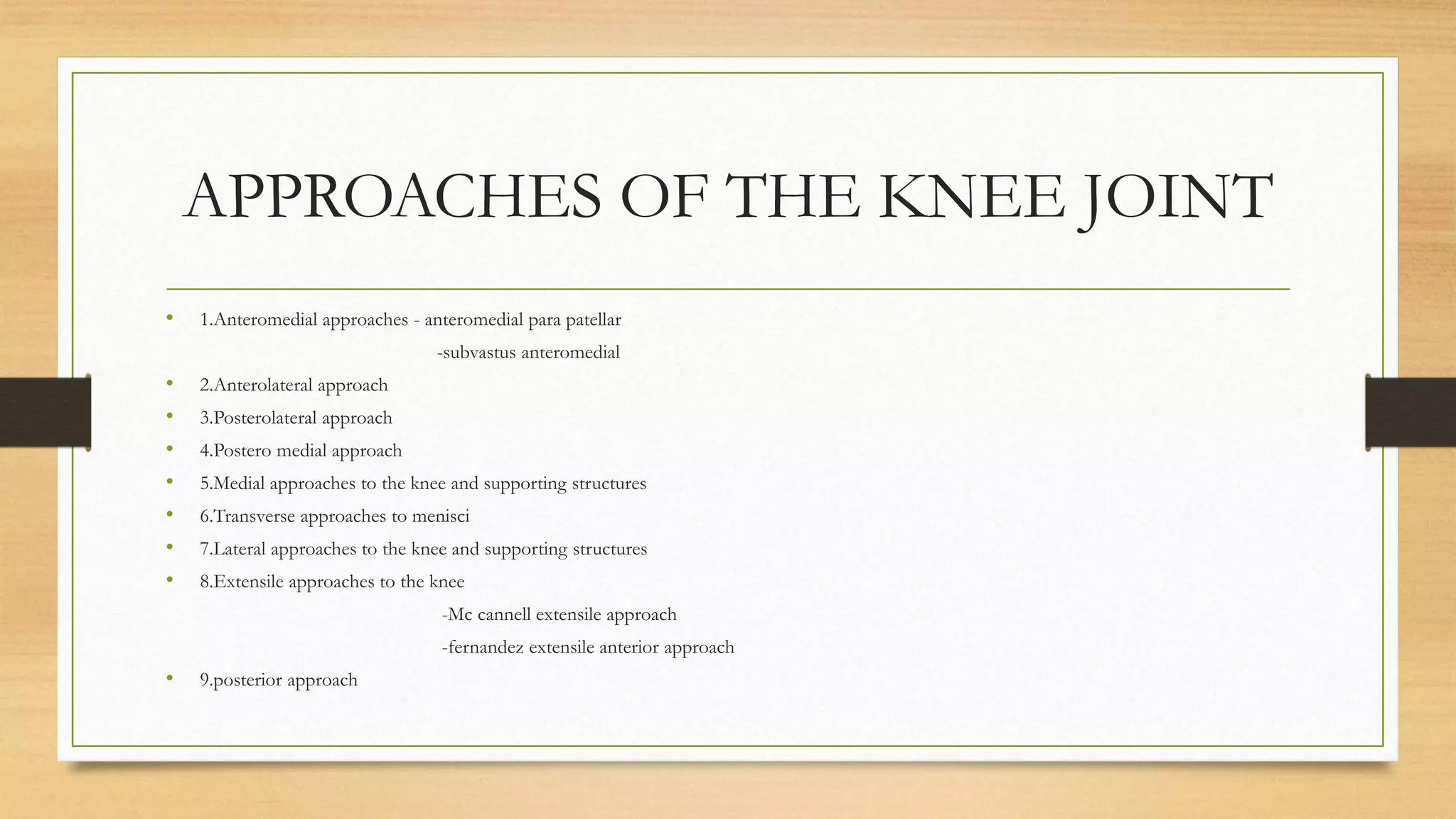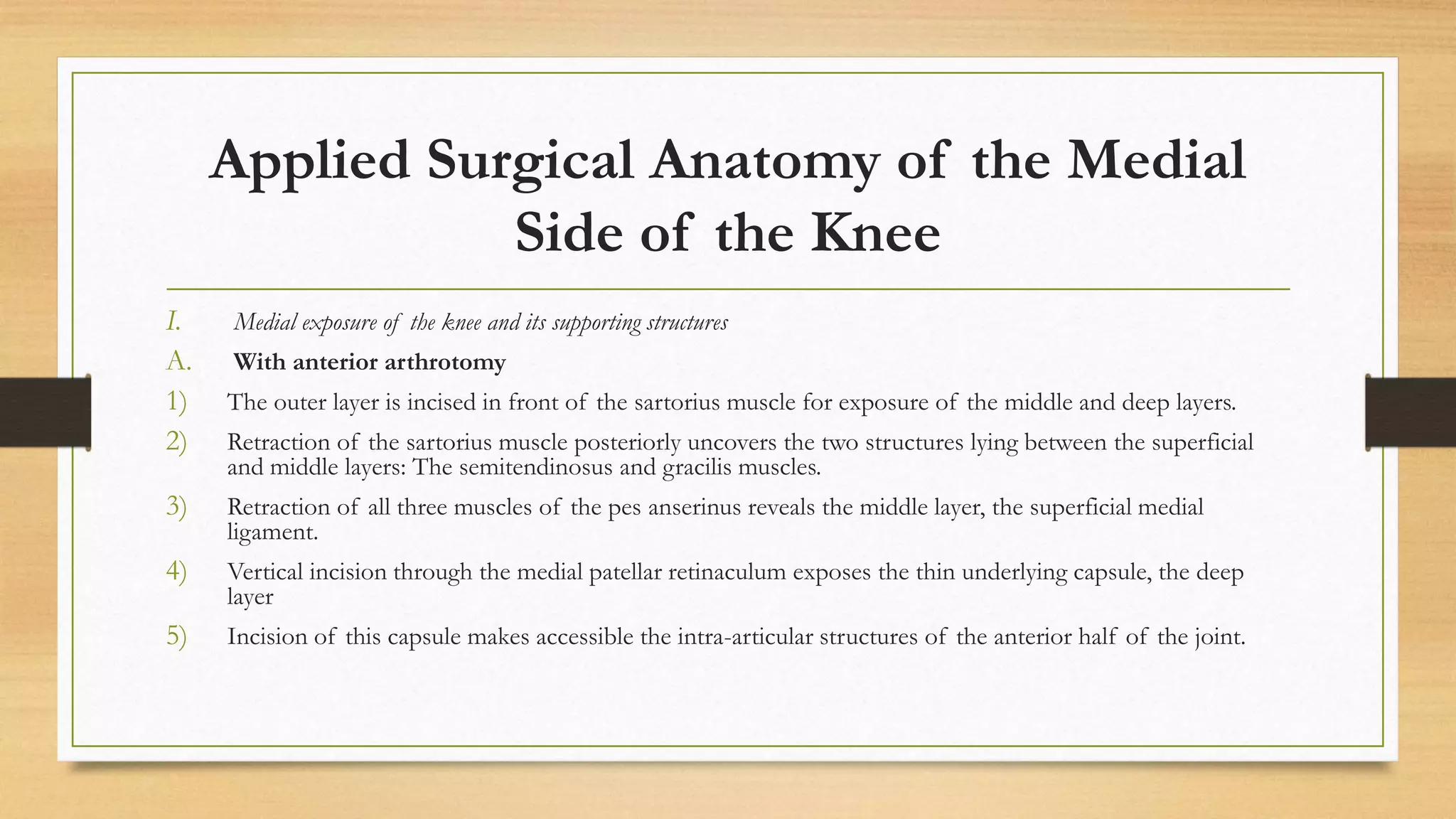The knee joint is superficial on three sides, making it ideal for arthroscopic approaches. Two main arthroscopic approaches and seven open approaches are described for accessing the knee joint. The medial para patellar approach, also known as the von Langenbeck approach, is the most commonly used open approach and involves a longitudinal incision along the medial border of the patella. Care must be taken to avoid damaging nerves like the infrapatellar branch of the saphenous nerve during surgical approaches to the knee.







































































































